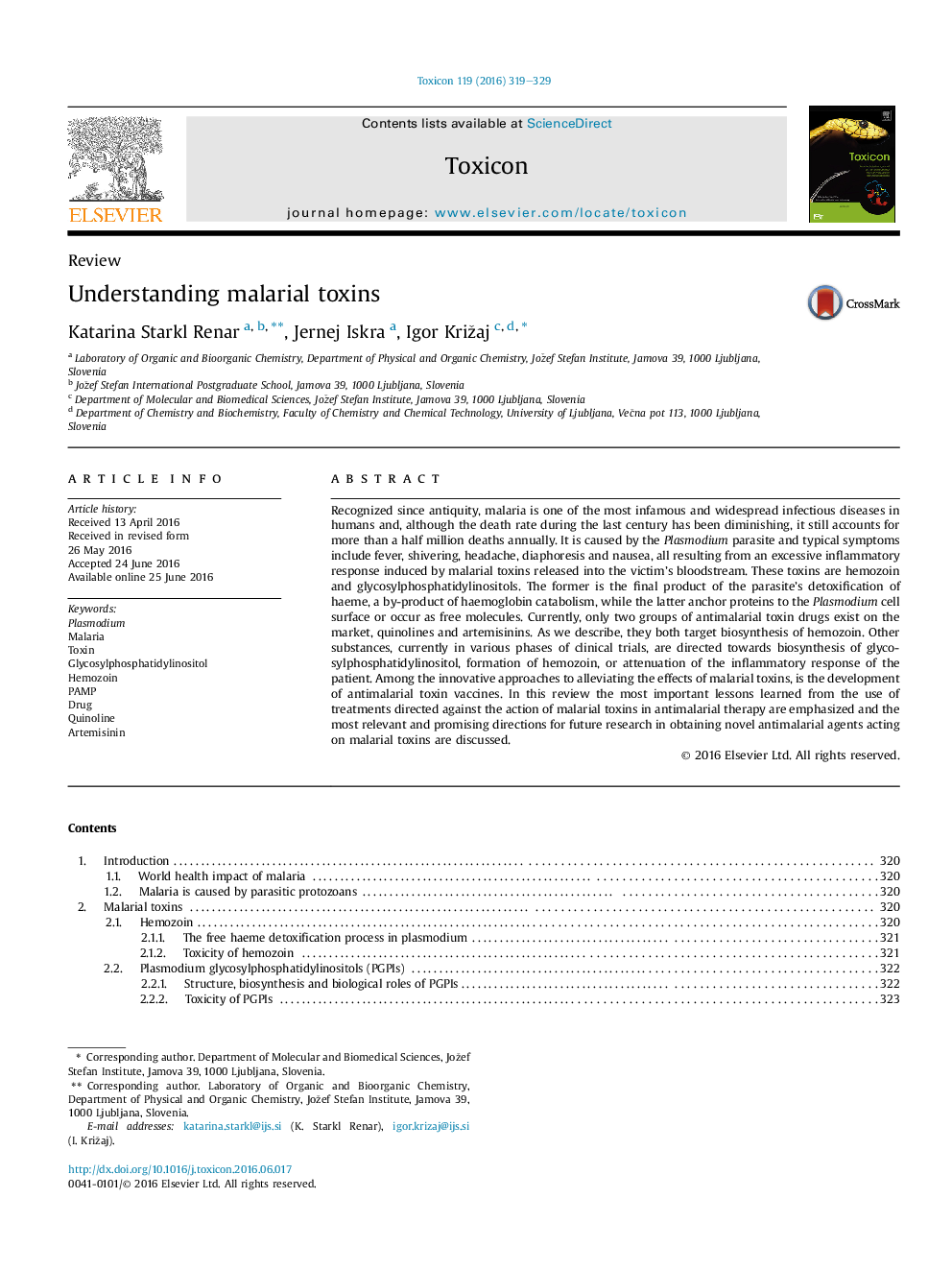| کد مقاله | کد نشریه | سال انتشار | مقاله انگلیسی | نسخه تمام متن |
|---|---|---|---|---|
| 2063984 | 1544117 | 2016 | 11 صفحه PDF | دانلود رایگان |
• Malarial toxins cause excessive inflammatory response in patients.
• Malarial toxins are hemozoin and Plasmodium GPI.
• Artemisinins and quinolines, drugs interfering with hemozoin biosynthesis, are the only registered antimalarial toxin drugs.
• Inhibition of Plasmodium GPI biosynthesis is the most promising antimalarial toxin strategy under development.
Recognized since antiquity, malaria is one of the most infamous and widespread infectious diseases in humans and, although the death rate during the last century has been diminishing, it still accounts for more than a half million deaths annually. It is caused by the Plasmodium parasite and typical symptoms include fever, shivering, headache, diaphoresis and nausea, all resulting from an excessive inflammatory response induced by malarial toxins released into the victim’s bloodstream. These toxins are hemozoin and glycosylphosphatidylinositols. The former is the final product of the parasite’s detoxification of haeme, a by-product of haemoglobin catabolism, while the latter anchor proteins to the Plasmodium cell surface or occur as free molecules. Currently, only two groups of antimalarial toxin drugs exist on the market, quinolines and artemisinins. As we describe, they both target biosynthesis of hemozoin. Other substances, currently in various phases of clinical trials, are directed towards biosynthesis of glycosylphosphatidylinositol, formation of hemozoin, or attenuation of the inflammatory response of the patient. Among the innovative approaches to alleviating the effects of malarial toxins, is the development of antimalarial toxin vaccines. In this review the most important lessons learned from the use of treatments directed against the action of malarial toxins in antimalarial therapy are emphasized and the most relevant and promising directions for future research in obtaining novel antimalarial agents acting on malarial toxins are discussed.
Journal: Toxicon - Volume 119, 1 September 2016, Pages 319–329
